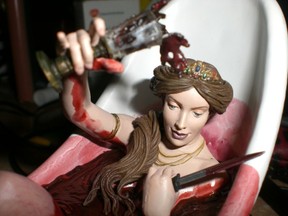 Pick a documentary, any documentary which purports to show the history of the vampire in true life and fiction. Countess Elizabeth Bathory will be there. She didn't have fangs. No-one has ever suggested that she drank blood. But she's there anyway.
Pick a documentary, any documentary which purports to show the history of the vampire in true life and fiction. Countess Elizabeth Bathory will be there. She didn't have fangs. No-one has ever suggested that she drank blood. But she's there anyway.
In many ways, she merely fills a gap. She saves documentary makers having to leap from Vlad the Impaler to the vampire reports coming out of Serbia in the 17th and 18th centuries. With Countess Bathory bloodying the 16th century, it can look like there's an unbroken line of vampiric ghastliness throughout.
But they all pick the same unfounded story. Blithely the figure is trotted out - 650 young, female virgins drained of blood to fill the Countess's bath. If dramatized, we now get a shot of an actress practically purring as she wipes the red stuff over her body. All that's missing is the rubber duck.
The scene is gory and repulsive enough to have made it into vampire fiction too. When the vampire Carmilla is discovered lying in a coffin half filled with blood, it is because Joseph Sheridan Le Fanu had been reading an account of Elizabeth Bathory. The real historical figure is as vampiric as it gets, without her actually being one of the Undead.
However, the court records of her trial demonstrate that it never happened. Which isn't to say that the reality wasn't just as terrible, but the whole basis for Bathory's inclusion in the vampire myth is unsound.
It's unclear why Turóczi felt the need to invent even more gruesome details. However, the context might be revealing. The Jesuit scholar made the claims in his Tragica Historia in 1729. At the time, the Catholic Habsburg Empire was trying hard to secure Hungary. It already had nominal control over the territory, but winning hearts, minds, souls and, above all, allegiance was proving much harder.
In 1715, the Habsburg King Charles III banned conversion to the Protestant faith throughout modern-day Hungary. Anyone wishing to hold a position of authority in the country had to be Catholic or convert to Catholicism. At the same time, a massive smear campaign against Protestantism was launched upon the country.
Though an historical figure, Countess Bathory had been a Protestant. Her crimes made her fair game for being paraded as an example of the worst excesses of her faith. But for this purpose it wasn't enough to describe her merely as a sadistic serial killer. As the descriptions grew more lurid, then it was supposed to point to the evil inherent in Protestantism.
In reality, all it did was create a vampire legend, which continues to be repeated to this day.



 Pick a documentary, any documentary which purports to show the history of the vampire in true life and fiction. Countess Elizabeth Bathory will be there. She didn't have fangs. No-one has ever suggested that she drank blood. But she's there anyway.
Pick a documentary, any documentary which purports to show the history of the vampire in true life and fiction. Countess Elizabeth Bathory will be there. She didn't have fangs. No-one has ever suggested that she drank blood. But she's there anyway.


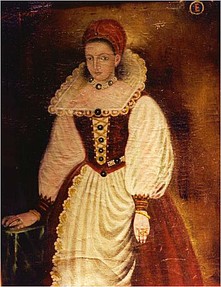 When György Thurzó, Lord Palatine of Hungary, arrived to confront the Countess, he found a servant girl dying in her castle. The child was hung in chains from the kitchen ceiling. Several other girls were locked up and terrified, some suffering the aftereffects of torture.
When György Thurzó, Lord Palatine of Hungary, arrived to confront the Countess, he found a servant girl dying in her castle. The child was hung in chains from the kitchen ceiling. Several other girls were locked up and terrified, some suffering the aftereffects of torture.


 We will never know precisely how many girls and young women died at the hands of Elizabeth Bathory. Her servants were convicted of the murders of eighty people. Even in the courtroom, it was estimated that as many as two hundred was the true count.
We will never know precisely how many girls and young women died at the hands of Elizabeth Bathory. Her servants were convicted of the murders of eighty people. Even in the courtroom, it was estimated that as many as two hundred was the true count.

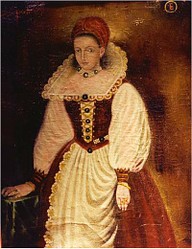

 St Tydecho's Churches in West Waleson 09/03/2014
St Tydecho's Churches in West Waleson 09/03/2014
 Goodies for an Outlander Premiere Partyon 03/06/2015
Goodies for an Outlander Premiere Partyon 03/06/2015
 Holocaust Memorial Day Interview with Rainer Höss, Grandson of Rudolf Architect of Auschwitzon 01/24/2015
Holocaust Memorial Day Interview with Rainer Höss, Grandson of Rudolf Architect of Auschwitzon 01/24/2015
 Romantic Valentine Gifts for an Outlander Fanon 01/16/2015
Romantic Valentine Gifts for an Outlander Fanon 01/16/2015

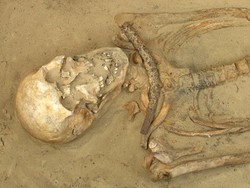

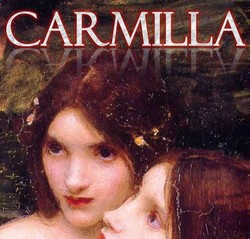
Comments
Aingham - There are so many cultural references to Elizabeth Bathory out there. The blood bath in particular really seems to resonate through the ages. Now that you know, I'm confident that you'll notice all the subtle references in various things too.
It's the peasant families which broke my heart in this story too. It just demonstrates the power balance in a feudal society, that such things could happen. If they hadn't sent their daughters, then the whole family would have been executed as an example to others. Can you imagine that kind of terror? Looking into your daughter's eyes and telling her that you can't save her? Sending her into that. *shudders* Those poor people need to have their voices heard, even so long after the event.
Which movie was it? I don't recognize the plot, but it sounds interesting.
Kari - I haven't included the worst of what she did, because that would have been outright gore and not suitable for Wizzley's readership. Elizabeth Bathory was a very nasty person.
I have read tentative diagnoses from modern psychiatrists. They all agree on sociopath. Some also say bipolar or schizophrenic.. But most of those commenting were focusing mostly on the bathing in blood, which didn't happen. She was definitely a sadist.
I'd heard about her about 10 years ago but never looked deep into her history. It was when a movie was released about a video game with Elizabeth Bathory as one of the characters that I started to research more about her and find out which bits of the legend were true. Her crimes were horrific and there's no doubt that she was a sadist but I'm glad to see that you've made it clear where the fiction lies. I do feel sorry for all those peasant parents who were forced to send their daughters to her, never to see them again.
Thank you for this page, Jo. It was an interesting read and I've learned a lot about her.
Jeez it seems to me bathing in their blood sounds MERCIFUL compared to the reality. *shivers* I can't help but wonder if she were to be diagnosed today what mental disorders she would be said to have.
The notion that Erzsebet did all of this in order to maintain her youthful beauty is so pervasive. It's in movies, books, documentaries, everything. I'd never fully looked into her until I came to write this article. It was quite eye-opening to realize that none of that happened. What she did do was gruesome enough. You wouldn't think that it needed embellishment!
Dracula is the victim of being a 'foreign' serial killer - though in his case, war was the justification - whose name is pronounced precisely like an Irish Gaelic vampiric fairy. Bram Stoker certainly didn't want to set his story in Ireland, so he relocated and nicked your historical figure. He'd never been to Transylvania in his life!
Thank you.
Having lived in Transilvania all my childhood and throughout my teens, I'm glad to see finally a more accurate depiction of one of the 'monsters' of the country (the other one is Dracula, but that's another story). You don't believe how many people still believe (based on Hollywood movies) that indeed Erzsebet Bathory drank blood and Dracula was a real vampire, lol.
Great article!
In different ways, her times both facilitated and limited the damage that Elizabeth Bathory could do. She came from an extremely powerful family, not just in Hungary. Her uncle and grandfather had both been Voivods of Transylvania. Her cousin was the King of Poland. There was only one person in the world with the power to even try her. That was the King of Hungary and Croatia, and he was heavily in debt to the Bathory family.
She wasn't worried about being caught. Nor did she have to concern herself too much about deposing of the evidence. Who was going to stop her? She had about as much concern for being spotted, as you might have wrapping up a chicken carcass and putting it in the bin.
It's been hypothesized that Bathory was actually a genius, at least in intellectual capacity. She was certainly very, very well educated , far more so than her husband. She had access to the best teachers in Europe, while she was growing up. She spoke several languages fluently. As her husband spent so much time away fighting wars, she ran all of their households. They had more than one castle and several large houses. Plenty to keep her occupied, but if she was a genius stuck without diversion, then yes, bored strikes and so did she.
Remember too that torture was far more acceptable for someone of her class then. Her husband was certainly torturing the Turks that he captured. He and Elizabeth swopped notes on the best ways to inflict pain. However acceptable it was, she did go overboard in a big way. Plus it wasn't prisoners of war and enemies of the state screaming possible intelligence. It was mostly peasant girls tortured for pleasure.
Yet how much worse could it have been, if the attitudes and social hierarchy which allowed this, had continued beyond the industrial revolution? There could well have been several zeros added to the end of that death tally.
I don't know if 'blood-bath' comes from her. It sounds like it should!
I'd never heard of her. When you put a sociopath in power... What in the world? I think as much as these types of things can be studied, it is still baffling sometimes, when you really consider what people are really capable of. Just what is going through their heads? It seems like she didn't even seem to care, like she wasn't the least bit worried about being "caught" she just did her thing, and otherwise could care less, it seems anyways.
I thought, for a moment, just how bored was she? Like, there's nothing to do today, I'm so bored...oh, I know, I'll just watch someone die of hypothermia. This afternoon should be great!
Anyways, yeah...no...I'm still baffled by the fact that she not only did all of this but then did things like just leaving a lot of the bodies lying around. She had to have been completely insane.
Can I say I think her name is kind of ironic? I guess it'd be kind of hard to forget what she's infamous for...Bathory's blood baths and all. She did earn the reputation though, because even if the physical blood baths weren't real, six hundred and something dead at the hands of one person kind of really is a blood bath of sorts. That phrase has nothing to do with this does it?
There is something gruesomely fascinating about a madwoman bathing in blood. I think that's why it's endured so much. Add into that the dark fascination which I think most people have with serial killers, and we're sunk. Only with the medieval aristocracy could you get kill counts quite that high though!
This story has always captured my interest. I enjoyed reading it. I never saw the movies, only documentaries.